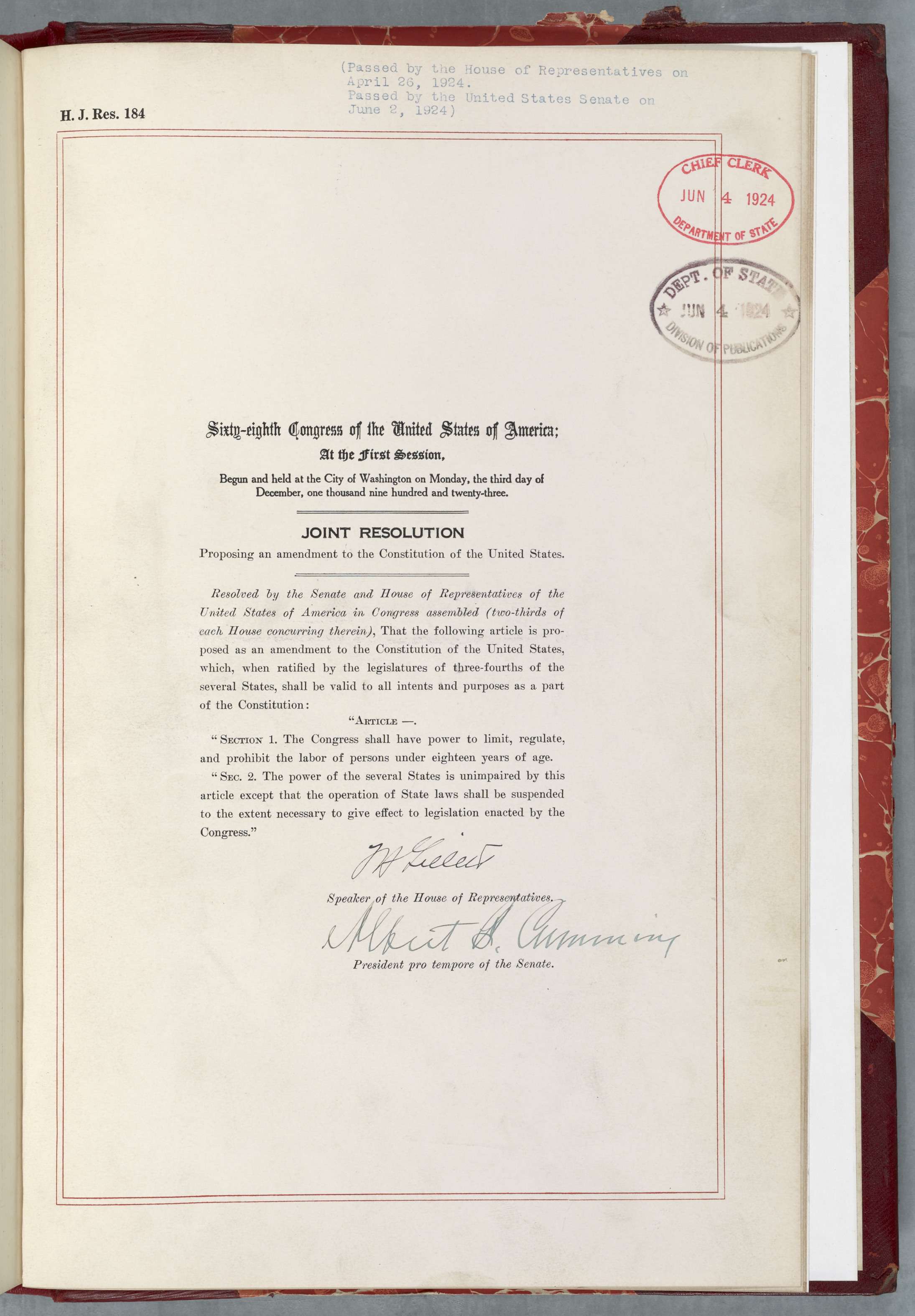Joint Resolution Proposing an Amendment to the Constitution of the United States (Child Labor)
6/2/1924

The House of Representatives passed the joint resolution on April 26, 1924, by a vote of 297–69. The Senate passed it on June 2, 1924, by a vote of 61–23. The proposed constitutional amendment was then submitted to the state legislatures for ratification.
After a few state ratifications in 1924 and 1925, the amendment stalled due to a successful ad campaign to discredit it. The amendment fell short of the required three-fourths threshold and eventually faded away. However, Congress obtained Federal protection for children in 1938 when it passed the Fair Labor Standards Act.
Transcript
(Passed by the House of Representatives on April 26, 1924. Passed by the United States Senate on June 2, 1924)
H.J. Res. 184
Sixty-eighth Congress of the United States of America;
At the First Session
Begun and held at the City of Washington on Monday, the third day of December, one thousand nine hundred and twenty-three.
JOINT RESOLUTION
Proposing an amendment to the Constitution of the United States
Resolved by the Senate and House of Representatives of the United States of America in Congress assembled (two-thirds of each House concurring therein), That the following article is proposed as an amendment to the Constitution of the United States, which, when ratified by the legislatures of three-fourths of the several States, shall be valid to all intents and purposes as a part of the Constitution:
"Article —.
"SECTION 1. The congress shall have power to limit, regulate, and prohibit the labor of persons under eighteen years of age.
"SEC. 2. The power of the several States is unimpaired by this article except that the operation of State laws shall be suspended to the extent necessary to give effect to legislation enacted by the Congress."
FH Gillett
Speaker of the House of Representatives
Albert B. Cummins
President pro tempore of the Senate
Rights: Public Domain, Free of Known Copyright Restrictions. Learn more on our privacy and legal page.



